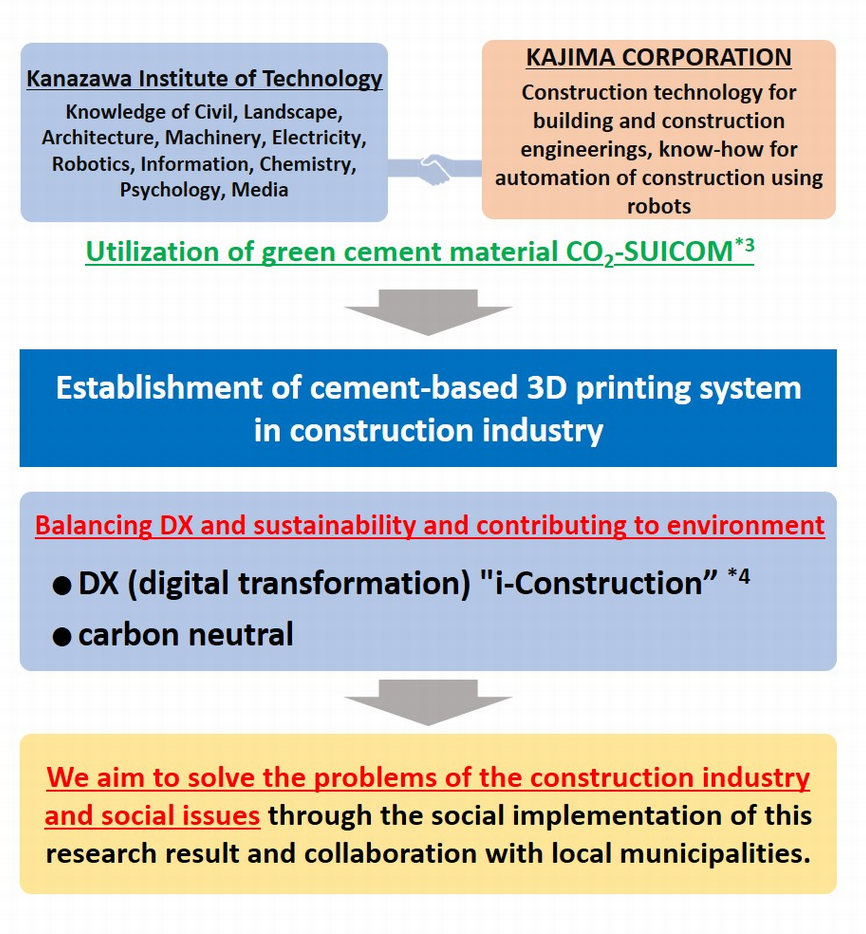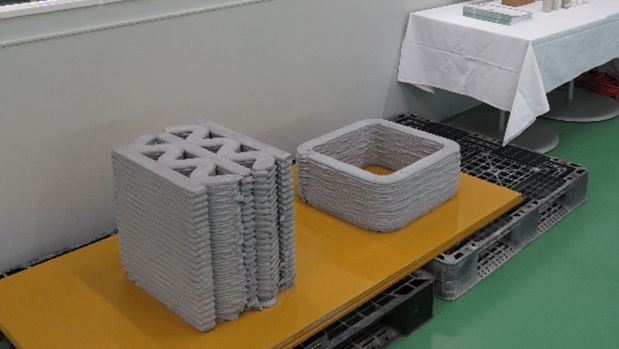Laboratory features
Research on cement-based 3D printing has many components. For example, research on the needs of local public and private sectors, designs that reflect culture, selection of optimal materials, control of robots, structural analysis including topology optimization design*1, surface processing, cutting and polishing, and 3D scanning of deliverables, analysis from the user's point of view, etc.
Kanazawa Institute of Technology, which can combine a wide range of specialized fields such as civil, architecture, machinery, robots, electricity, information, chemistry, psychology, and media, and Kajima Corporation, which has carbon negative*2 construction materials and an automated construction system that uses robots develop design, manufacturing and construction technology for cement-based 3D printing while utilizing the knowledge and technology of both organizations. Furthermore, in cooperation with local municipalities, etc., research for social implementation will be promoted.
Outline of Research

In order to spread and develop cement-based 3D printing in the construction field, the products will be installed in public places under a system of industry, government and academia in collaboration with local municipalities. As a result, many citizens will recognize.
Kanazawa Institute of Technology adopts a cross-disciplinary research system. Also, Kajima Corporation will adopt a cross-internal collaboration system. In addition, both is building an organization-to-organization collaboration system. Under the guidance of university professors and engineers from Kajima Corporation, students actively participate in social implementation research and accumulate experience in practical technology development.

3D printed cementitious laminate sample
*1 Topology optimization design
A method of designing by calculating how to arrange materials to achieve the optimum structure after the necessary constraints are given to the design space.
*2 carbon neutral, carbon negative
Carbon neutral means reducing the sum of greenhouse gas emissions and greenhouse gas absorption to zero. Also, carbon negative refers to a state in which the amount of carbon dioxide absorbed is greater than the amount emitted. Therefore, this refers to a condition that makes the overall emissions negative.
*3 CO2-SUICOM®
CO2-Storage and Utilization for Infrastructure by Concrete Materials
CO2-SUICOM is a registered trademark of Chugoku Electric Power Co., Inc., Kajima Corporation, and Denka Corporation.
*4 i-Construction
A Japanese initiative that aims to drastically improve productivity by fully utilizing consistent 3D data in the construction process from surveying to design, construction, and maintenance.

